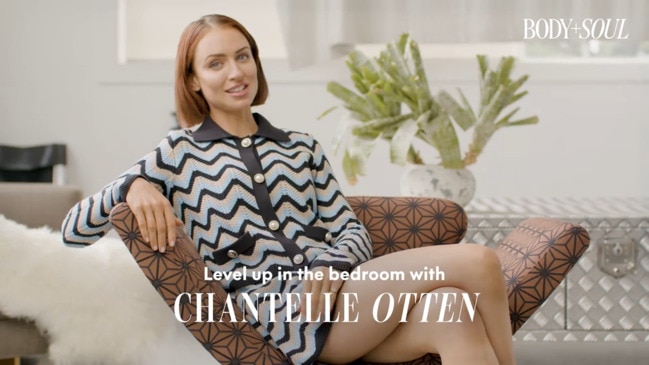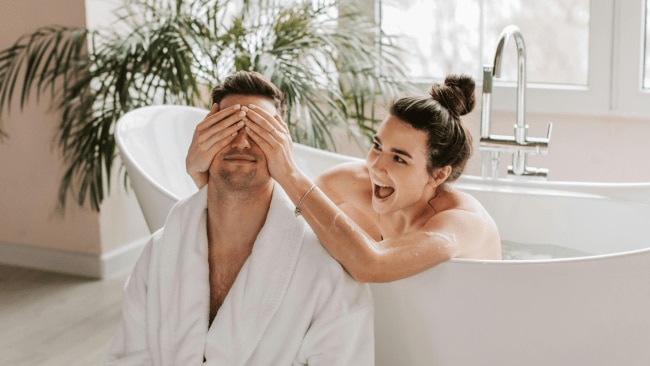What is the 'looksmaxxing' TikTok trend and why is it so dangerous?
Drastic measures are being taken

Lifestyle
Don't miss out on the headlines from Lifestyle. Followed categories will be added to My News.
Altering our appearance at the whim of our personal insecurities is nothing new, in fact, we’ve been sporting the latest trends in fashion and beauty for centuries. But a recent shift in social media discourse has the practice trending once again, and this time for all the wrong reasons.
The hashtag #looksmaxxing has amassed 1.9 billion views on TikTok. From sporting fresh haircuts and practising flattering poses to undergoing intense surgical procedures to alter an aspect of your appearance, the fast-growing trend is seeping into users’ feeds at an alarming rate. But what exactly is looksmaxxing?
Defining the practice can be tricky, as the term can be applied to a variety of things. At its core, looksmaxxing is any attempt to glow up your appearance, often in the pursuit of love. Unlike many beauty trends on the social media platform, looksmaxxing and its many iterations appear to be just as popular across creators of genders.
Dr Paul Coceancig, an Australian Maxillofacial Surgeon who has pioneered a surgical solution to sleep apnea, shares with Body+Soul why this emerging trend is something to be especially cautious of.
Like what you see? Sign up to our bodyandsoul.com.au newsletter for more stories like this
The many faces of looksmaxxing
TikTok is overflowing with tutorials on ‘how to position your jaw for photos’, ‘what hairstyle suits your face shape’, and pointed before and after transformations, each tagged with the infamous hashtag. But there are different iterations of the trend, often categorised as ‘softmaxxing’ or ‘hardmaxxing’ depending on the severity of what each video entails.
At face value, ‘softmaxxing’ isn’t so scary, referring to everyday activities like makeup, styling your outfits, and day-to-day grooming in the pursuit of fostering attention on social media. But while most of these activities can be chalked up to tradition, routine or fuel for yourself-confidence, some softmaxxing techniques can easily creep into dangerous territory.
“Concerns arise regarding the normal process of sexualization and the use of beauty products marketed to young people to enhance their appearance, which can fuel abnormal ambitions and behaviours,” says Dr Coceancig. “These practices can lead to body dysmorphic disorder, characterised by perceived physical flaws, driving individuals to extreme measures to modify their appearance."
The maxillofacial surgeon says there are also long-term consequences of seemingly non-invasive procedures like Botox that often aren’t transparently publicised in videos promoting the trend.
‘Hardmaxxing’, on the other hand, almost always has far more serious long-term consequences. This category encompasses the most extreme iterations of looksmaxxing, namely invasive and permanent aesthetic surgeries. As a maxillofacial surgeon, Dr Coceancig has seen alarming trends emerging in the kinds of procedures people are seeking out.
“While these surgeries are intended to address therapeutic needs, they are increasingly being sought for cosmetic purposes,” he says. “Even more worrisome is the emergence of a trend where people attempt self-surgeries, a practice strongly discouraged due to the potential risks and complications involved.”
“It is essential to emphasise the importance of consulting with a qualified medical professional, such as a general practitioner or surgeon, before undergoing any surgical procedure to ensure safety and appropriateness,” adds Dr Coceanig.
“There is a notable absence of legislative and social oversight regarding how certain medical procedures are portrayed, especially on social media platforms like TikTok, Instagram, and Snapchat,” says the surgeon, explaining that much of the responsibility falls on individual surgeons to right the wrongs of misinformative video trends online.

Is TikTok transparency causing more harm than good?
It doesn’t seem all that long ago that magazine covers were plastered with stories speculating what nips and tucks celebrities had undergone. Today, the discourse around cosmetic surgery has changed drastically, with influencers and Hollywood’s elite adopting a far more transparent approach to their appearance. Consequently, much of the stigma and shame attached to certain procedures has been lifted, having an astounding impact on the way emerging generations openly consider undergoing aesthetic work.
“Traditionally in older age groups, we see patients present with concerns of sagging skin and falling breasts, which can be enhanced through modern plastic and reconstructive procedures,” explains the surgeon. “However, in younger age groups like Gen Z, the idea that plastic surgery can be adapted to modify a younger body to achieve a certain look is alarming, especially when these age groups are largely influenced by social media forums, rather than personal choice.”
“There is an increasing desire for tattoos, body piercings and conformity towards achieving a certain Instagram or TikTok look, and there is an ambition to drive a young person to achieve likes for self-validation,” he adds. “The rise of cosmetic surgery has matched the influence of social media, as it feeds the insecurities of the young in an abnormal way.”
More Coverage
Originally published as What is the 'looksmaxxing' TikTok trend and why is it so dangerous?




